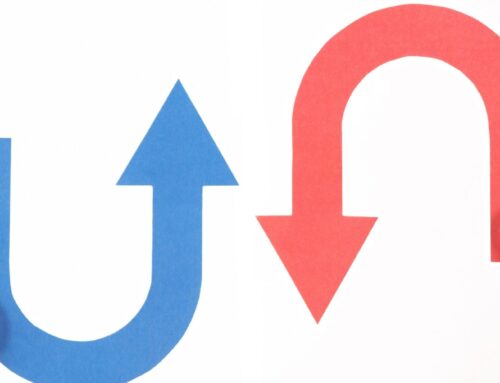
Ever had a client hand you a set of books so messy you didn’t know where to start? When they come to us for help, cleanup projects often turn out to be more complex than they first appear. Without a clear process bookkeepers risk undercharging, overworking and taking on clients who aren’t a good fit. That’s where the paid diagnostic review can be the key to unlocking profitable QBO cleanups.
What Is a Paid Diagnostic Review?
A paid diagnostic review is a structured process where you assess a client’s books, identify the level of cleanup required, and determine a clear scope of work—all while getting paid for your expertise. Think of it as the bookkeeping equivalent of a doctor’s diagnosis. Instead of diving straight into cleanup, you evaluate the books at a transactional level to ensure accuracy and completeness.
The diagnostic review benefits both you and your client. It provides clarity, reduces surprises, and positions you as a professional advisor. Clients appreciate the low-risk engagement, and you gain the opportunity to demonstrate your value upfront.
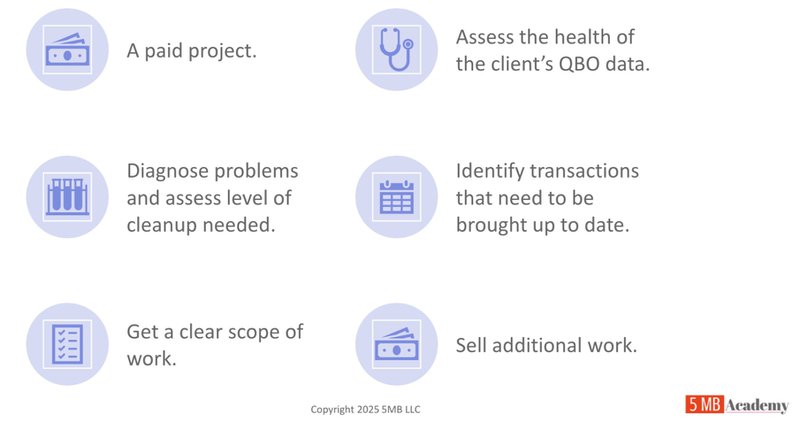
How Does a Paid Diagnostic Review Work?
To conduct a diagnostic review effectively, follow these steps:
1. Request Key Documents:
Start by asking for accountant access to QuickBooks Online, business bank and credit card statements, and the most recent corporate tax return. If the client is significantly behind, request documents from the period after their last filed return.
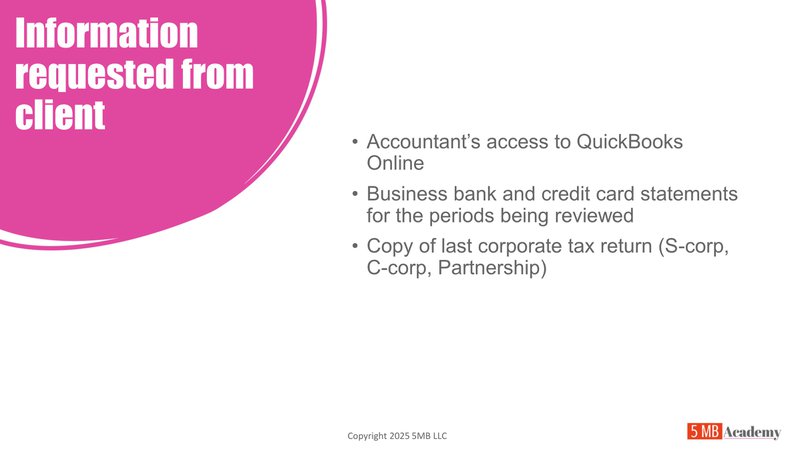
2. Use a Checklist:
Review critical areas such as tax return reconciliation, bank and credit card accounts, undeposited funds, profit and loss statements, and accounts receivable and payable. The goal is to uncover issues like uncategorized transactions, discrepancies, or outdated reconciliations. To make the process even easier, download my free Smart Review Checklist.
3. Report of Findings and Recommendations:
Create a professional report outlining the issues, recommendations, and the scope of cleanup work. This report acts as your deliverable and positions you as an advisor.
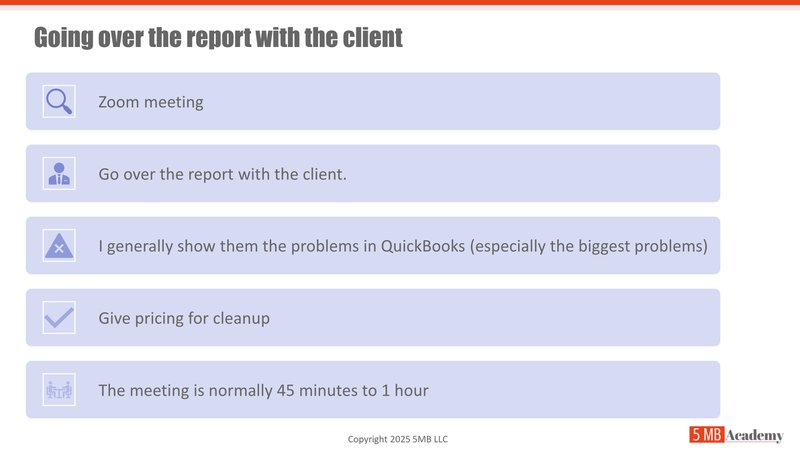
4. Present Your Report:
Schedule a Zoom meeting to walk the client through the findings. Use this time to explain the identified problems and solutions. This is also the perfect time to recommend tailored services that will address their specific needs.
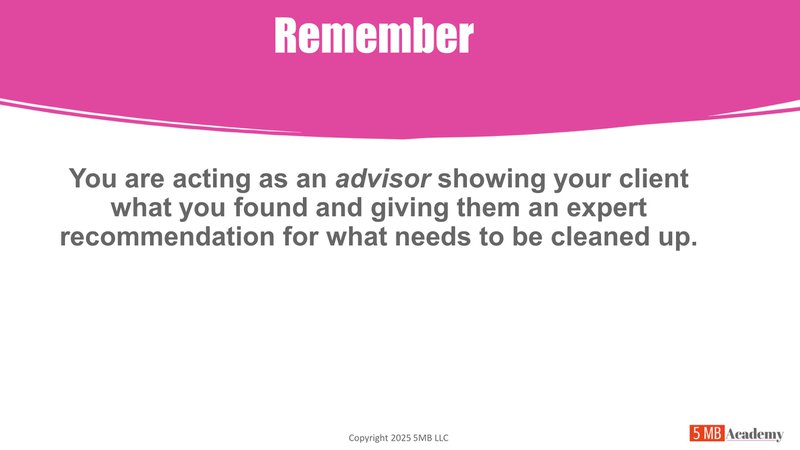
Why Charge for a Diagnostic Review?
When you offer diagnostic reviews for free, you devalue your time and expertise. Worse, clients may walk away with a detailed list of what’s wrong without ever hiring you to fix it. Charging for a diagnostic review not only compensates you for your time but also pre-qualifies serious clients who value your services.
Clients willing to pay for a review are often premium clients—those who trust you to lead the process and are ready to invest in their business’s financial health.
Pricing Strategies for Diagnostic Reviews
Don’t overthink your pricing. Here are two simple methods to consider:
- Based on Revenue:Up to $500K: $300–$500
$500K–$1M: $500–$750
Over $1M: $950+ - Based on Review Period:Up to 5 months: $500
Up to 9 months: $700
Up to 12 months: $900
These prices serve as a starting point. Adjust based on your niche, experience, and the client’s needs. Over time, increase your rates as your expertise grows.
The Value of a Diagnostic Review
Beyond determining the scope of work, a diagnostic review offers invaluable benefits:
- Qualifies Clients:
Weed out clients who don’t value your services or won’t provide the necessary documents. - Reduces Surprises:
Avoid unexpected complexities during cleanup. - Builds Trust:
Clients see you as a professional advisor, not just a service provider. - Provides Control:
You define the scope and process, ensuring realistic expectations.
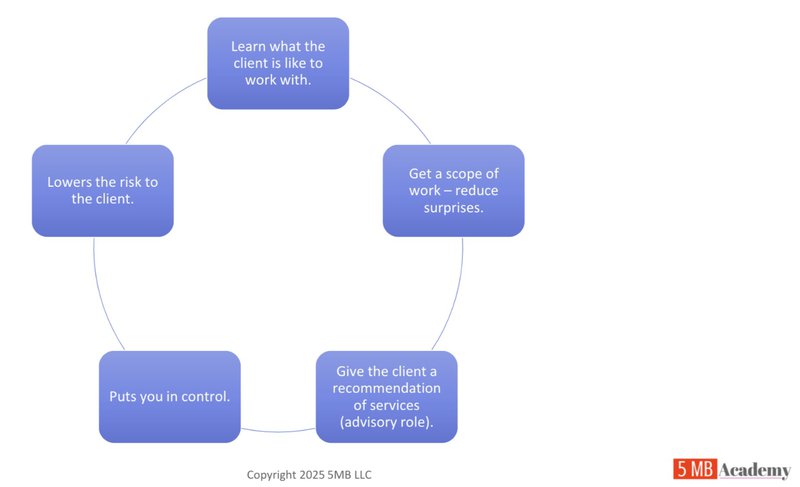
Turning Challenges Into Opportunities
Many bookkeepers fear pricing or discussing money with clients, but the key is to stay confident, listen, and remove emotion from the equation. Start by getting the prospective client on a discovery call to understand their needs. Ask open-ended questions like, “Tell me why you reached out to me today,” and take notes as they share their pain points.
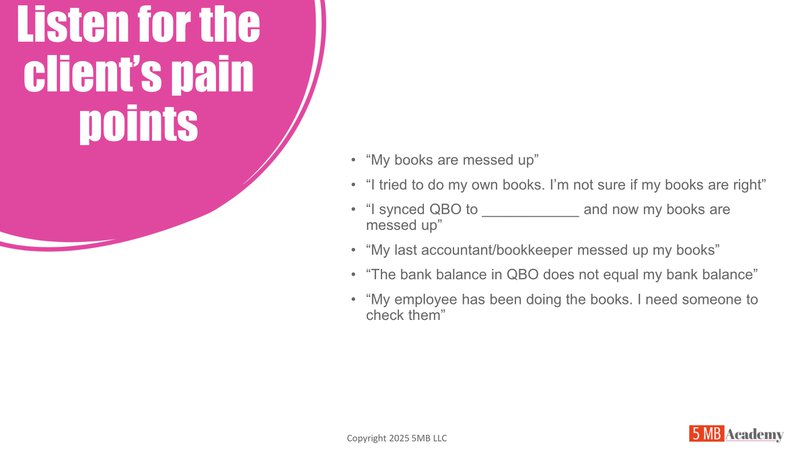
Once you’ve listened and identified their concerns, confidently offer a solution:
“Here’s what I recommend. I suggest starting with a paid diagnostic review of your books for $300. At the end of the review, I’ll go over my findings and provide fair pricing for the cleanup.”
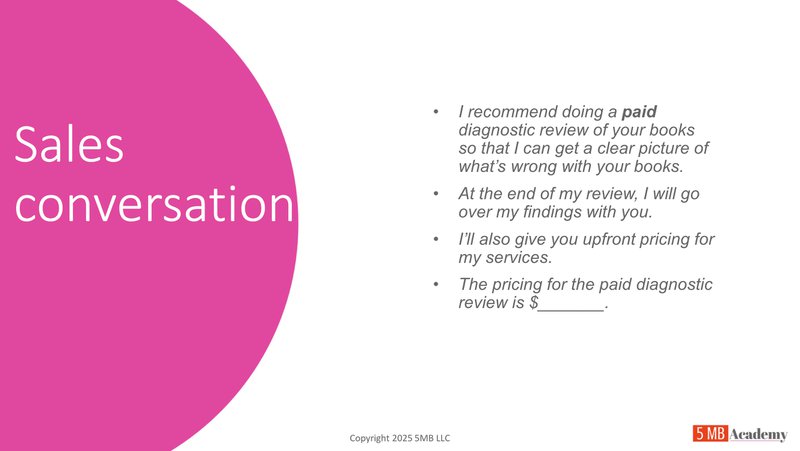
If the client asks about cleanup costs, provide a range to set expectations:
“Clients your size typically pay $4,000 to $5,500 for a year-long cleanup.”
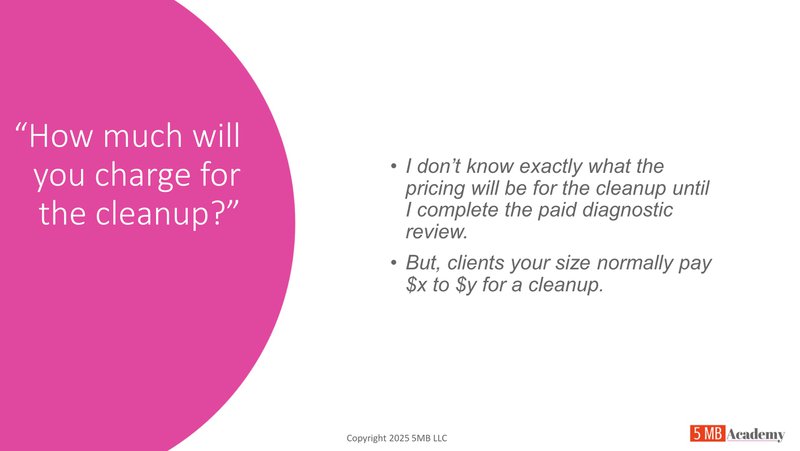
This approach demonstrates that you’ve heard their concerns, positions you as an advisor and sets clear expectations while allowing for adjustments.
Closing and Resources
That’s how paid diagnostic reviews are your key to unlocking profitable QBO cleanups! Implementing a paid diagnostic review process positions you as an expert, ensures fair compensation and streamlines your workflow for more profitable client relationships.
Looking for more resources? Here is a link to get my free Smart Review Checklist so you can learn how to review your prospective clients books in 15 minutes or less. You can also visit my 5MB Academy to see a full list of my QuickBooks Online cleanup related courses and resources linked here. As always, I’d like to invite you to join my 5 Minute Bookkeeping Community on Facebook to connect with fellow bookkeepers. It’s a safe place to ask questions and share your journey. I hope to see you there!






